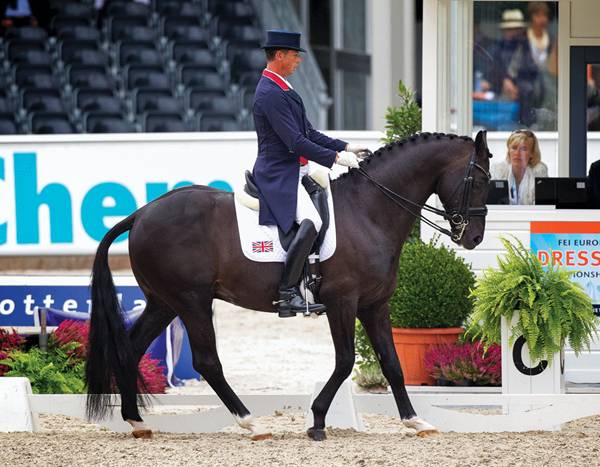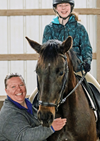Q: When riding a rein-back, my horse drags his hind legs. How can I get him to lift his legs while backing up? —Name withheld by request
A: The rein-back is a challenging movement that can have multiple problems. Even the top horses and riders in the world respect this movement and approach it carefully. However, most of the time, if the horse and rider can remember that it’s not about stopping or pulling backward, problems can be avoided. Dragging the hind legs can be caused by the horse losing his forward feeling or by misunderstanding the movement.

After the horse has learned to calmly halt, square up and accept the connection while standing still, we can work on correcting the rein-back. Three elements are key to a successful rein-back: understanding, relaxation and an active hind leg. We need to help the horse understand how to back up slowly, deliberately, in diagonal pairs and without tension. While working on the rein-back, the horse should feel like he could willingly go forward at any time. If it feels like the horse has become stuck, send him forward into a brisk walk or trot. Making several trot–walk–halt–trot transitions will help get the horse thinking forward again.
Let’s start with the idea that the halt is relaxed and the horse is willing to rein-back, but that the steps are unclear and the hind feet are dragging. Using the turn on the forehand will help to mobilize the horse’s hind legs and create stepping rather than dragging. Start with bringing the horse to the halt and then ask him to move sideways off one leg into a side pass (full pass). This will get the horse moving his hind legs. Gradually ask the forehand to lessen its sideways progression and bring the hind legs actively, step-by-step, into a turn on the forehand. Ask the horse to stop, and then make another step or two sideways with the hind legs. Walk away and repeat this exercise until he is responsive to your aids in a relaxed way. If, at any point, the horse starts to get tense or misunderstands, ride forward, change the subject and return to these exercises after relaxation has been re-established. After the horse is comfortable moving off one leg, repeat the exercise on the other side. The purpose of the exercise is to teach the horse to move off the leg without going through the reins (stepping forward).
After the horse and rider are comfortable with the turn on the forehand in both directions, we can begin to work on improving the rein-back. Start with asking for one or two steps of the turn on the forehand. Next, apply the outside aids, slightly lessen the inside leg and ask for the rein-back. Ask for only one step. If the horse steps relaxed, ask him to move forward, do another couple steps of turn on the forehand, then ask again for the rein-back, two steps this time. This should improve his acceptance of the rein-back aids and, over time, help the horse to understand to lift the legs in diagonal pairs.
One other issue can arise when working on your rein-back: The horse may start picking up his feet appropriately but not maintain straightness as he backs up. While straightness is important, don’t worry too much about it at first. Achieving a relaxed rein-back with active hind legs is more important at this stage. Once you have this, you will find that getting the horse to stay straight in the rein-back will become a fairly easy issue to fix.
Plan on working on these exercises over a series of rides. You may spend several rides just working on the side pass and turn on the forehand to confirm that the horse can do these movements in a relaxed manner. Then start to focus on the rein-back. If you don’t rush this work, you should end up with a relaxed, active rein-back.

Jennifer Kaiser is a USDF bronze, silver and gold medalist as well as a USDF certified instructor through Second Level and a USDF “L” Education Program graduate with distinction. With her assistant, Korin Rinaldo, she operates Kaiser Dressage out of Forrest Hill Farm, in Lafayette, Indiana.











